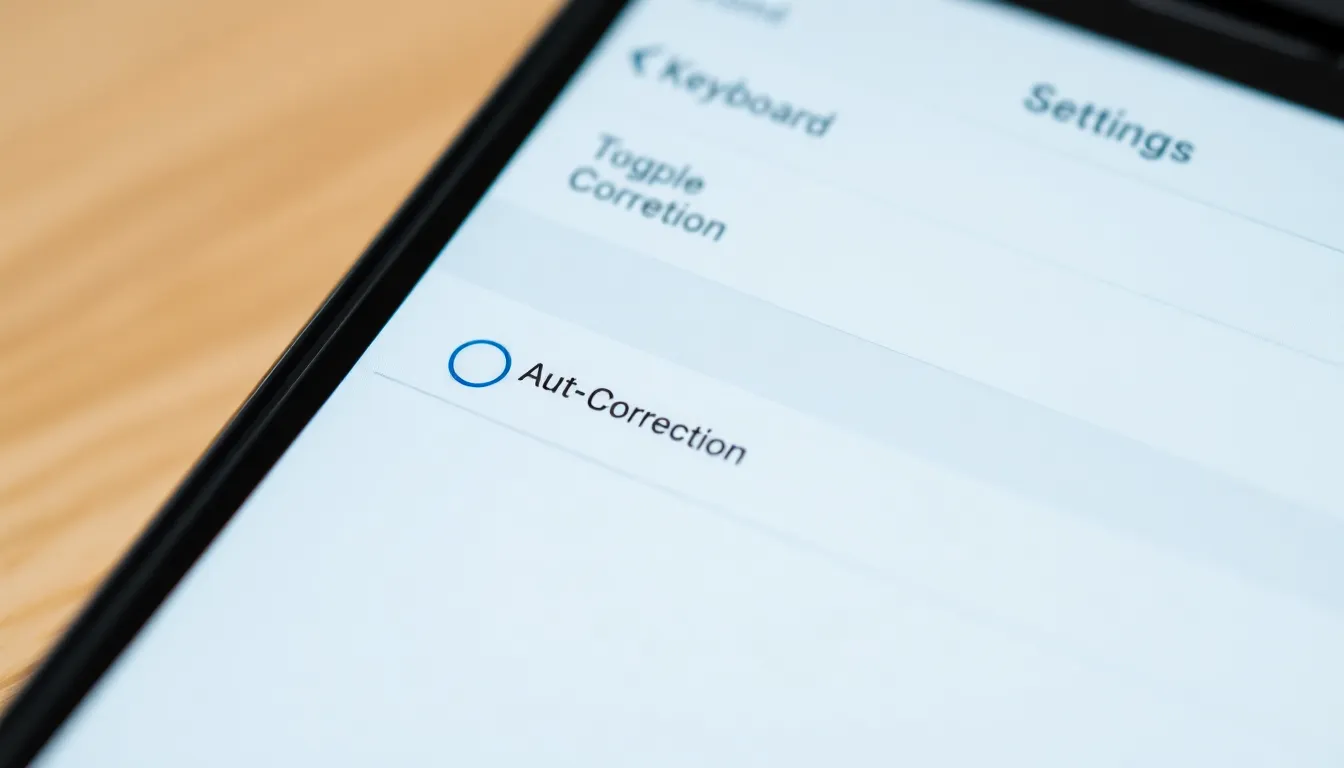Imagine typing out a heartfelt message only to have your iPhone turn it into a comedy sketch. Autocorrect can be both a blessing and a curse, transforming “Let’s meet at noon” into “Let’s meat at raccoon.” If you’ve ever found yourself scratching your head, wondering where that mischievous feature hides, you’re not alone.
Table of Contents
ToggleUnderstanding Autocorrect Features
Autocorrect serves an essential function on iPhones, aiming to streamline text input and enhance communication. Various features contribute to its performance.
What Is Autocorrect?
Autocorrect acts as a built-in text modification tool that identifies and corrects typing errors in real-time. This feature uses algorithms and predictive text to suggest corrections based on user typing patterns. The technology learns from user input, improving over time. Users frequently benefit from its ability to transform misspelled words into their intended versions. This function extends beyond simple spelling mistakes, adjusting punctuation and capitalization as necessary.
Importance of Autocorrect in Texting
Autocorrect enhances texting speed and efficiency. By reducing the time spent on correcting mistakes, it allows users to communicate with greater fluidity. This feature plays a crucial role in minimizing misunderstandings caused by typographical errors. Often, messages convey intended meanings more clearly due to accurate corrections. Many users appreciate the convenience that autocorrect offers while typing in various contexts, whether casual chats or professional communications. Improving clarity and efficiency remains central to its purpose, impacting everyday texting experiences.
Locating Autocorrect Settings on iPhone

Finding the autocorrect settings on an iPhone is straightforward. Users can follow a few simple steps in the keyboard settings.
Accessing Keyboard Settings
To access keyboard settings, navigate to the “Settings” app. Scroll down until you find “General” and tap on it. Next, select “Keyboard” from the list of options. The keyboard settings page displays various typing-related features. Users can now explore options like predictive text and auto-capitalization, alongside autocorrect.
Enabling and Disabling Autocorrect
Enabling or disabling autocorrect is simple. On the keyboard settings page, locate the “Auto-Correction” toggle. Slide it to the right to enable or to the left to disable. The setting reflects the current status, allowing adjustments based on user preference. Users looking for a more personalized experience can also experiment with these settings to suit their typing habits.
Customizing Autocorrect on iPhone
Customizing autocorrect enhances the typing experience on an iPhone. Users can tailor settings according to personal preferences.
Adding Words to the Dictionary
Adding specific words to the dictionary prevents unexpected autocorrect mishaps. Open the “Settings” app, and navigate to “General.” Select “Keyboard,” then tap on “Text Replacement.” To add a new word, press the “+” icon. Enter the phrase in the “Phrase” field and an abbreviation in the “Shortcut” field, if desired. This customization allows the iPhone to recognize names, slang, or specialized terms, ensuring smoother communication.
Setting Up Text Replacement
Setting up text replacement simplifies typing frequent phrases. Access the “Settings” app, go to “General,” then “Keyboard.” Here, tap “Text Replacement” to create shortcuts. For instance, typing “omw” can automatically expand to “on my way.” Add new replacements by hitting the “+” button. Enter the phrase you often use and its corresponding shortcut. This feature saves time, enhances efficiency, and reduces repetitive typing during conversations.
Troubleshooting Autocorrect Issues
Autocorrect issues can disrupt smooth communication. Knowing how to identify and fix these problems enhances the user experience.
Common Problems with Autocorrect
Users frequently encounter unexpected word changes. Autocorrect may replace correctly typed words with incorrect suggestions. Misspellings might not be corrected as expected. Users often find themselves typing one word, only for it to autocorrect to a completely different one. Some names or slang terms might not be recognized, leading to frustrating misinterpretations. Another issue arises when autocorrect seems to lag, especially in messages with rapid typing.
Solutions for Autocorrect Glitches
Simple adjustments can often resolve autocorrect glitches. First, users can toggle the “Auto-Correction” option on and off in the keyboard settings. This refresh can restore proper functionality. Next, adding specific words through the “Text Replacement” feature helps the iPhone recognize personalized terms. Clearing the keyboard’s history may also eliminate persistent errors. Restarting the iPhone is another effective strategy, allowing the device to reset its software. Regularly updating iOS ensures users have the latest improvements, which can enhance autocorrect performance.
Autocorrect on the iPhone serves as both a helpful tool and a source of amusement. Users can easily find and adjust its settings to match their typing style, enhancing communication efficiency. With the ability to customize the dictionary and set up text replacements, users can tailor their experience to minimize misunderstandings.
Addressing common autocorrect issues can further improve its functionality. By staying proactive with settings and updates, users can enjoy a smoother texting experience. Embracing the quirks of autocorrect while leveraging its benefits can lead to clearer and more enjoyable conversations.


